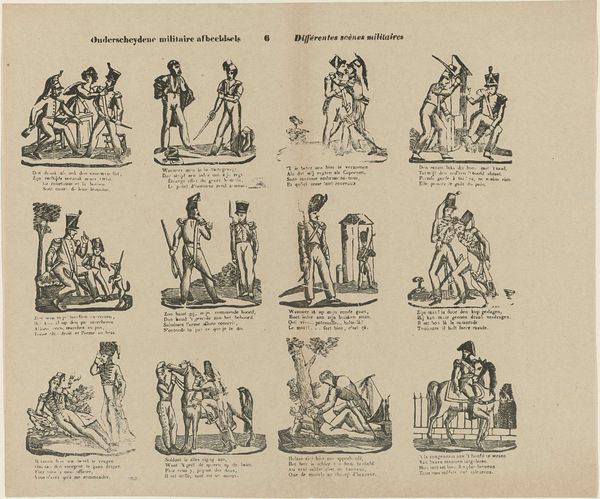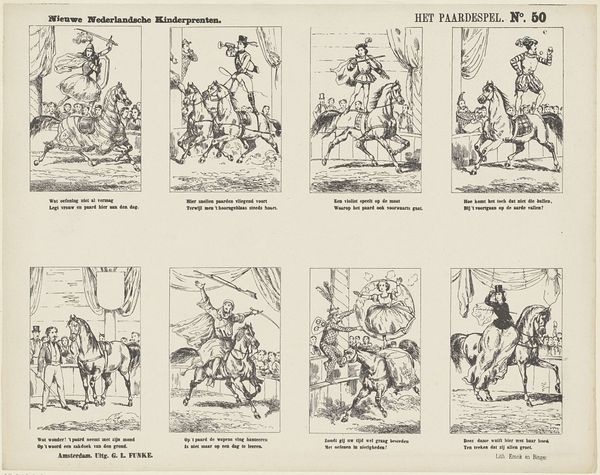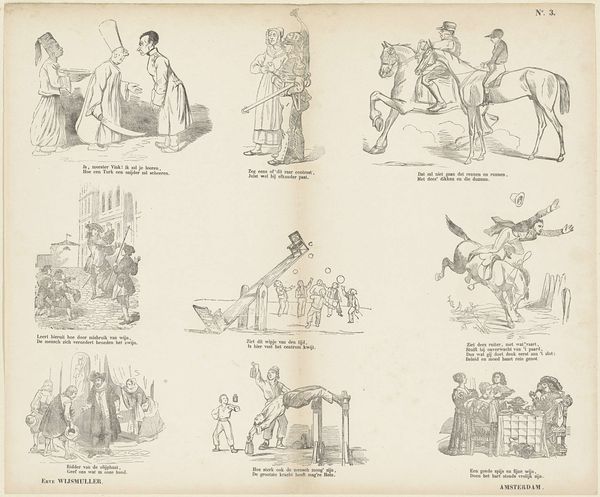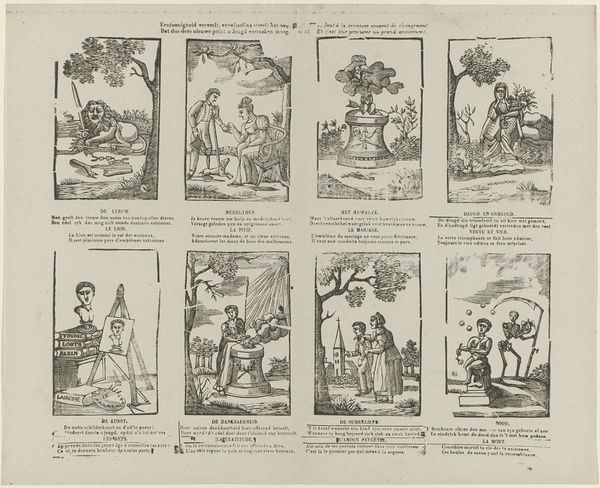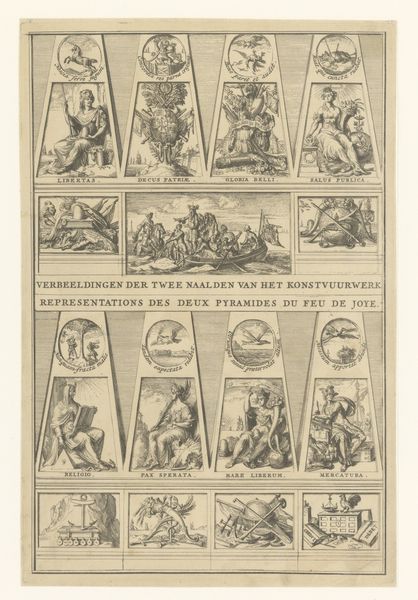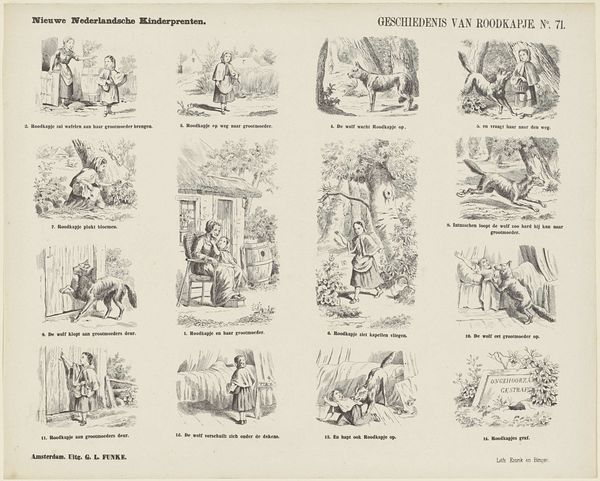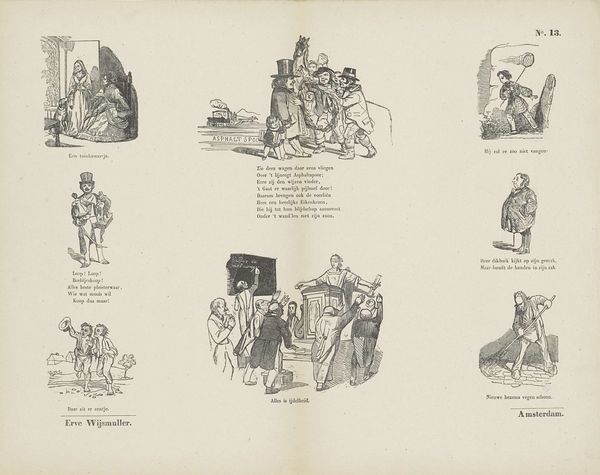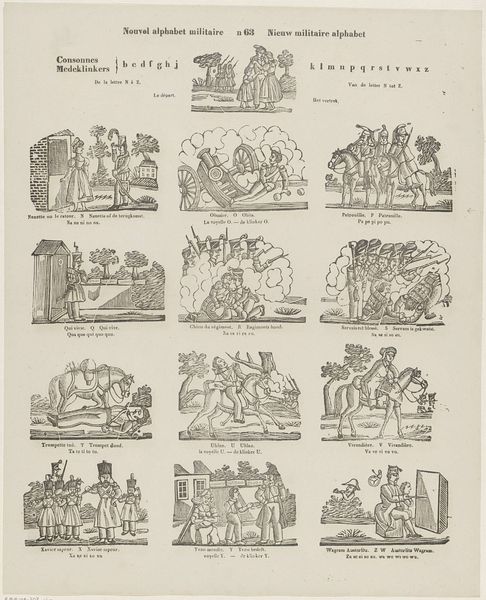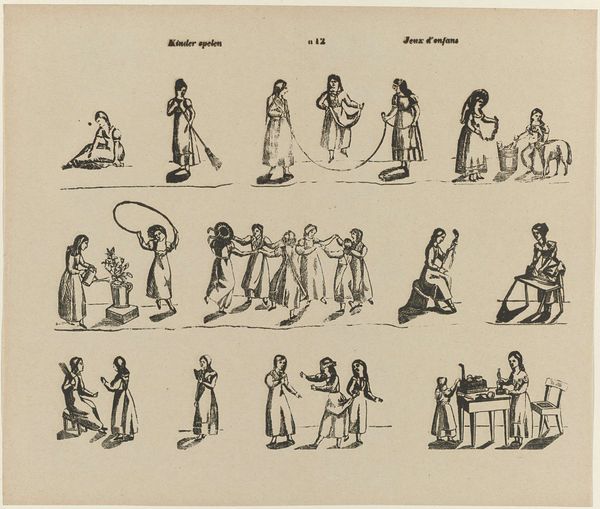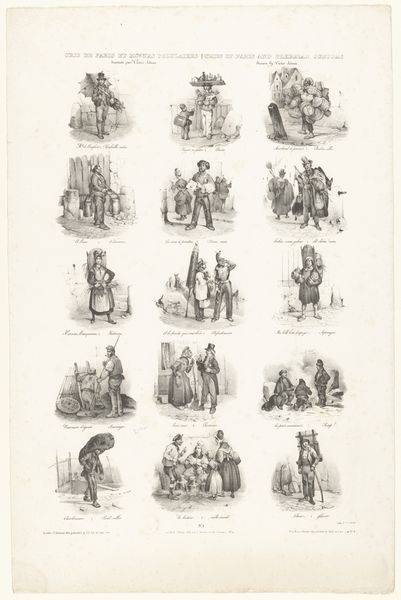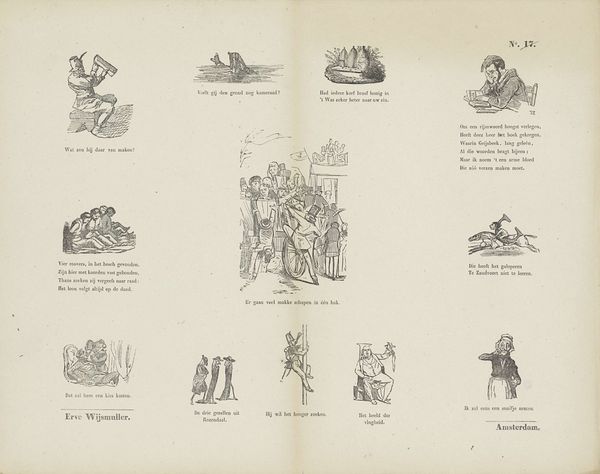
graphic-art, print, engraving
#
graphic-art
# print
#
old engraving style
#
genre-painting
#
history-painting
#
engraving
#
realism
Dimensions: height 340 mm, width 427 mm
Copyright: Rijks Museum: Open Domain
Editor: Here we have "Soldaten" by George Lodewijk Funke, sometime between 1865 and 1875, done as an engraving. It depicts various Dutch soldiers, almost like a fashion plate. What really strikes me is how detailed the uniforms are, almost fetishistically so. How do you interpret this work, focusing on the method and social elements involved? Curator: This isn't simply about the surface depiction, but the industrialization of image-making and its intersection with militarism. Engravings, as a reproductive technology, allowed for the mass dissemination of images like these. It points to the emergence of a visual culture centered on national identity and, crucially, the military. The act of creating multiple copies shifts attention to the labour and material circumstances that makes mass visual culture possible. Editor: So, it's less about artistic expression and more about the process of creating a kind of national visual identity through mass production? Curator: Precisely. Consider the material implications. Copper plates, ink, paper, the workshop... These aren't just aesthetic choices, but resources extracted and transformed to promote a specific ideological viewpoint. How does that impact your perception of the images themselves? Editor: It definitely makes me see the images differently. The care in showing all these soldiers loses its charm and suggests a mass standardization. Were these widely circulated? Did this contribute to some social trend? Curator: Yes, these kinds of prints were affordable and circulated widely. Mass manufacturing served a purpose to make soldiering, and Dutch power visible. By making images, an intangible idea becomes palpable through commodity circulation and material consumption. The medium is indeed the message. Editor: I see now. Looking at the process and materials adds so much to what the image tells us about its context. Curator: Exactly. Thinking materially encourages us to view art as part of wider economic and cultural networks. This approach is something to hold on to in viewing artworks more broadly.
Comments
No comments
Be the first to comment and join the conversation on the ultimate creative platform.
